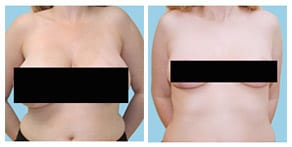A Word About Breast Reduction In Men…
Gynecomastia (male breast over-development) affects an estimated 40 to 60 percent of men and can affect only one breast or both. Certain drugs and medical problems have been linked gynecomastia, however, there is no known cause in the vast majority of cases.
Breast reduction surgery can help men who feel self-conscious about the appearance of their over-developed breasts. To achieve a chest that is flatter, firmer, and better contoured, the male breast reduction removes fat and/or glandular tissue from the breasts, and in extreme cases removes excess skin.
The Best Candidates For Gynecomastia Correction
Surgery to correct gynecomastia can be performed on healthy men of any age, but the best candidates for surgery have firm, elastic skin that will reshape to the body’s new contours.
For obese men, or for overweight men who have not first attempted to correct the problem with exercise or weight loss, surgery may be discouraged. For individuals who drink alcohol beverages in excess or smoke marijuana are usually not considered good candidates for surgery because these drugs, along with anabolic steroids, may cause gynecomastia. Stopping the use of these drugs to see if the breast fullness will diminish is advisable before surgery is considered an option.
All Surgery Carries Out Some Uncertainty and Risk
Some of the risks of male breast reduction include but are not limited to:
- Infection
- Bleeding
- Seroma (fluid collection)
- Hematoma (collection of blood)
- Scarring
- Breast Asymmetry
- Loss of breast sensation or numbness, which may last up to a year
Planning Your Surgery
The initial consultation is very important. Dr. Granzow will need a complete medical history to examine your breasts and check for causes of the gynecomastia:
- Impaired liver function
- Use of estrogen-containing medications
- Anabolic steroids
- Marijuana use
- Hormone abnormalities
If a medical problem is the suspected cause, you’ll be referred to an appropriate specialist.
Occasionally a mammogram may be recommended to rule out the very small possibility of breast cancer and will reveal the breast’s composition. This will help determine how much fat and glandular tissue is contained within the breasts so the best surgical approach is chosen.
After surgery, you will have to wear a compression vest for several weeks to prevent fluid from building up in the surgical sites.
The Surgery
The surgery will take place at the Manhattan Beach office. Depending on the type of breast tissue that comprises your breast, Dr. Granzow may either cut it out or use liposuction or use both techniques. The incision is typically made in an inconspicuous location–either on the edge of the areola or in the under arm area, however, major reductions that involve the removal of a significant amount of tissue and skin may require larger incisions that result in more noticeable scars. A small drain is sometimes inserted through a separate incision to draw off excess fluids.
After Your Surgery
You will feel some discomfort for a few days after surgery that can be controlled with pain medications. You’ll be swollen and bruised for a while and the worst of your swelling will dissipate in the first few weeks, it may be three months or more before the final results of your surgery are apparent.
You can return to work as early as a day or two after surgery but should avoid heavy exercise for about three weeks.
Avoid sun exposure or use a strong sunblock for at least six months because the sunlight can permanently cause the scar to turn dark.
If you are ready to change the appearance of your chest, contact our office to schedule a consultation at (310) 882-6261.
